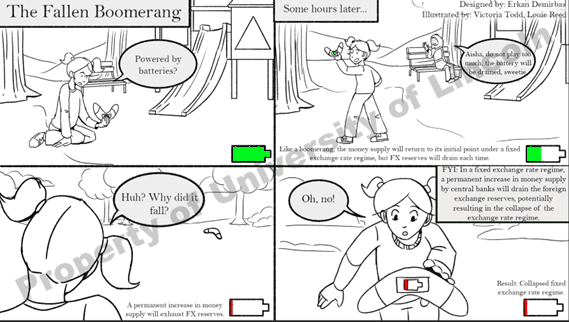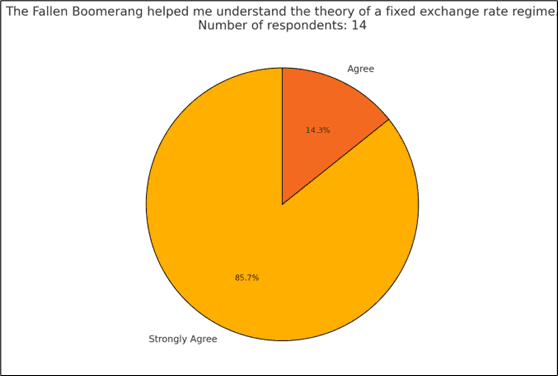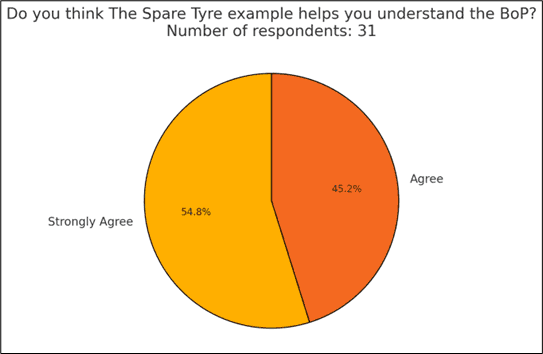Practical Steps to Crafting Engaging Analogy-Based Stories in Economics
Aim of the Case Study
The aim of this case study is to provide a practical framework for crafting analogy-based stories tailored to teaching economics topics. By following the principles of analogies pioneered by Gentner (1998) and leveraging practical insights, this case study highlights the stages involved in developing two selected stories and their applications.
Introduction
Teaching complex topics in economics to diverse cohorts of students is often challenging, especially for those with limited prior exposure to these subjects. Analogy-based storytelling offers an innovative solution by connecting new and unfamiliar concepts (target domains) to relatable and familiar ideas (base domains). This approach deepens the students' understanding by allowing them to form mental connections more naturally and intuitively (Chalfoun and Frasson, 2011; Zdravkovska et al., 2021).
This case study explores how analogy-based stories can be crafted using two examples: The Spare Tyre, which illustrates the balance of payments, and The Fallen Boomerang, which demonstrates the dynamics of a fixed exchange rate regime. The process is broken into six key stages, with insights drawn from practical applications in classroom settings.
The Process of Creating Analogy-Based Stories
1. Identifying the Learning Objective
Every analogy-based story starts with a clear learning objective, which ensures that the narrative aligns with the educational goals.
The Spare Tyre: The objective is to explain the components of the balance of payments (BoP), with a specific focus on the current account, the financial account, and the role of central bank interventions. To simplify the narrative, the capital account is intentionally excluded, reflecting its relatively minor share in the overall BoP framework.
The Fallen Boomerang: The goal is to demonstrate how an increase in the money supply impacts foreign exchange reserves and leads to the eventual collapse of a fixed exchange rate regime.
A clear objective ensures that the analogy is meaningful and effectively supports the learning outcome.
2. Breaking Down the Theory
Breaking the theory into its fundamental elements helps identify the components that need representation within the story. This step ensures no critical aspect is omitted.
Elements of the Theory and Their Role in the BoP
- Current Account Deficit: A malfunctioning component in the economy that needs to be covered.
- Financial Account Deficit: A temporary solution that offsets the current account deficit.
- Central Bank Intervention: The authority that steps in to balance the system when both accounts are in deficit.
Elements of the Theory and Their Role in a Fixed Exchange Rate Regime
- Money Supply: Represents cyclical changes in the economy.
- Foreign Exchange Reserves: Resources used to maintain the system’s balance, which deplete over time.
- Central Bank Intervention: The ultimate mechanism to prevent the system from collapsing.
After identifying the key components of the story, the next step is to clarify their roles, functions, and the relationships between these elements.
3. Finding Analogous Components
Analogous components can be derived from everyday life, fictional elements, or fairy tales to enhance the relatability and engagement of the story. These components mirror the roles and relationships identified in the previous step.
The Spare Tyre:
A flat tyre represents the current account deficit, symbolising a malfunctioning system.
A spare tyre serves as the financial account deficit, offering temporary relief.
Roadside recovery symbolises central bank intervention, stepping in to resolve the issue.
The Fallen Boomerang:
A boomerang embodies the cyclical nature of the money supply. I believe the boomerang is an excellent example to help students easily recall how the money supply returns to its initial level.
A battery represents the finite nature of foreign exchange reserves.
A fully drained battery illustrates drained depleted FX reserves that causes the system to collapse.
4. Establishing Relationships and Roles
The components in the stories must align with the structural alignment principles of Gentner (1983). These principles emphasise that the components in the base domain (story) must share the same role, relationship, or function with their counterparts in the target domain (theory).
Each component’s role within the theoretical framework is established to ensure accuracy and consistency in the analogy, as highlighted below:
The Spare Tyre:
- The flat tyre (current account deficit) disrupts the system.
- The spare tyre (financial account deficit) is expected to restore balance.
- The roadside recovery service (central bank intervention) restores balance when both tyres fail.
The Fallen Boomerang:
- The boomerang’s motion (money supply) reflects fluctuations in economic activity.
- The battery (foreign exchange reserves) depletes with each cycle.
- A fully drained battery (depleted FX reserves) causes the system to collapse.
The next step is more demanding and requires significant time, as it involves creativity, focus, further iteration, and refinement. I strongly recommend that educators collaboratively develop their stories with colleagues and students, while leveraging AI resources to identify the most appropriate elements.
5. Crafting the Story
The theoretical elements and analogous components are integrated into a coherent narrative that engages students and simplifies abstract concepts.
The Spare Tyre Story: Imagine a car traveling on a motorway. One of its tyres (current account) goes flat, requiring the driver to use a spare tyre (financial account). Unfortunately, the spare tyre is also flat. With no other options, the driver calls roadside recovery (central bank), which steps in to resolve the issue. This story mirrors how central banks intervene when both the current and financial accounts experience deficits.
The Fallen Boomerang Story: Aisha plays with a battery-powered boomerang (money supply). Each time the boomerang returns, the battery (foreign exchange reserves) depletes slightly. Despite her mother’s warnings, the girl continues playing until the battery is exhausted. At this point, the boomerang falls, symbolising the collapse of the fixed exchange rate system.
6. Integrating the Story into Teaching
Finally, supplementary materials, such as cartoons and the matching exercise sheet are created, to reinforce the learning experience, as displayed below:
The Spare Tyre

The Spare Tyre Matching Exercise Sheet
Matching exercise sheets can be utilised for formative assessment purposes to evaluate student understanding or as a self-assessment and revision tool to enhance the overall student learning experience.

In this example, students are tasked with aligning story elements—such as a flat tyre, a spare tyre, and roadside recovery service—with their theoretical counterparts: the current account, the financial account, and the central bank.
The Fallen Boomerang

The Fallen Boomerang Matching Exercise Sheet
Students are tasked with matching the elements of the Fallen Boomerang cartoon to their corresponding theoretical concepts.

These exercises serve as formative assessments, promoting active participation and consolidating understanding.
Applications and Benefits
1. Enhanced Engagement
Analogy-based stories engage students by presenting abstract theories in an accessible format. For example, students connected easily with the Spare Tyre story, finding it relatable and memorable.
2. Inclusivity and Accessibility
The cartoons and stories incorporate diverse characters and colourblind-friendly designs, ensuring that all students feel included and represented.
3. Improved Understanding
Students with limited backgrounds in economics benefit from simplified explanations. For instance, the Fallen Boomerang story helped PG level students demystify the complexities of fixed exchange rate regimes, as evidenced below:

Furthermore, the Spare Tyre cartoon helped PG-level students easily understand the relationship between the components of BoP.

Challenges and Lessons Learned
Misaligned analogies can confuse students; therefore, the roles, functions, and relationships between the elements of the theory must fully correspond to those in the story. Furthermore, the sequence of story elements should align precisely with their theoretical counterparts to ensure clarity and coherence.
Conclusion
Crafting analogy-based stories in economics transforms traditional teaching methods into dynamic, engaging experiences. By identifying clear objectives, breaking down theories, and developing relatable narratives, educators can simplify complex topics while maintaining theoretical integrity.
The Spare Tyre and the Fallen Boomerang examples demonstrate how analogy-based storytelling bridges gaps in prior knowledge, fosters engagement, and improves learning outcomes. This approach empowers educators to create memorable learning experiences that engage and inspire diverse student cohorts, ensuring both inclusivity and academic success.
References
Gentner, D. (1983). Structure mapping: A theoretical framework for analogy, Cognitive Science, 7(2), 155-170. https://doi.org/10.1016/S0364-0213(83)80009-3
Gentner, D. (1998). Analogy. In W. Bechtel & G. Graham (Eds.), A companion to cognitive science (pp. 107-113). Oxford: Blackwell. https://doi.org/10.1002/9781405164535.ch1
Pierre Chalfoun, P, and Frasson, C., (2011), Subliminal Cues While Teaching: HCI Technique for Enhanced Learning, Hindawi Publishing Corporation Advances in Human-Computer Interaction, Article ID 968753, https://doi.org/10.1155/2011/968753
Zdravkovska, S., D, Haque,S., and Szydlak, W., (2021), Subliminal Messages - Motivating Learners Using Visual Cues: An Experimental Study, Balkan Social Science Review Vol.18, https://doi.org/10.46763/BSSR2118367dz
↑ Top
